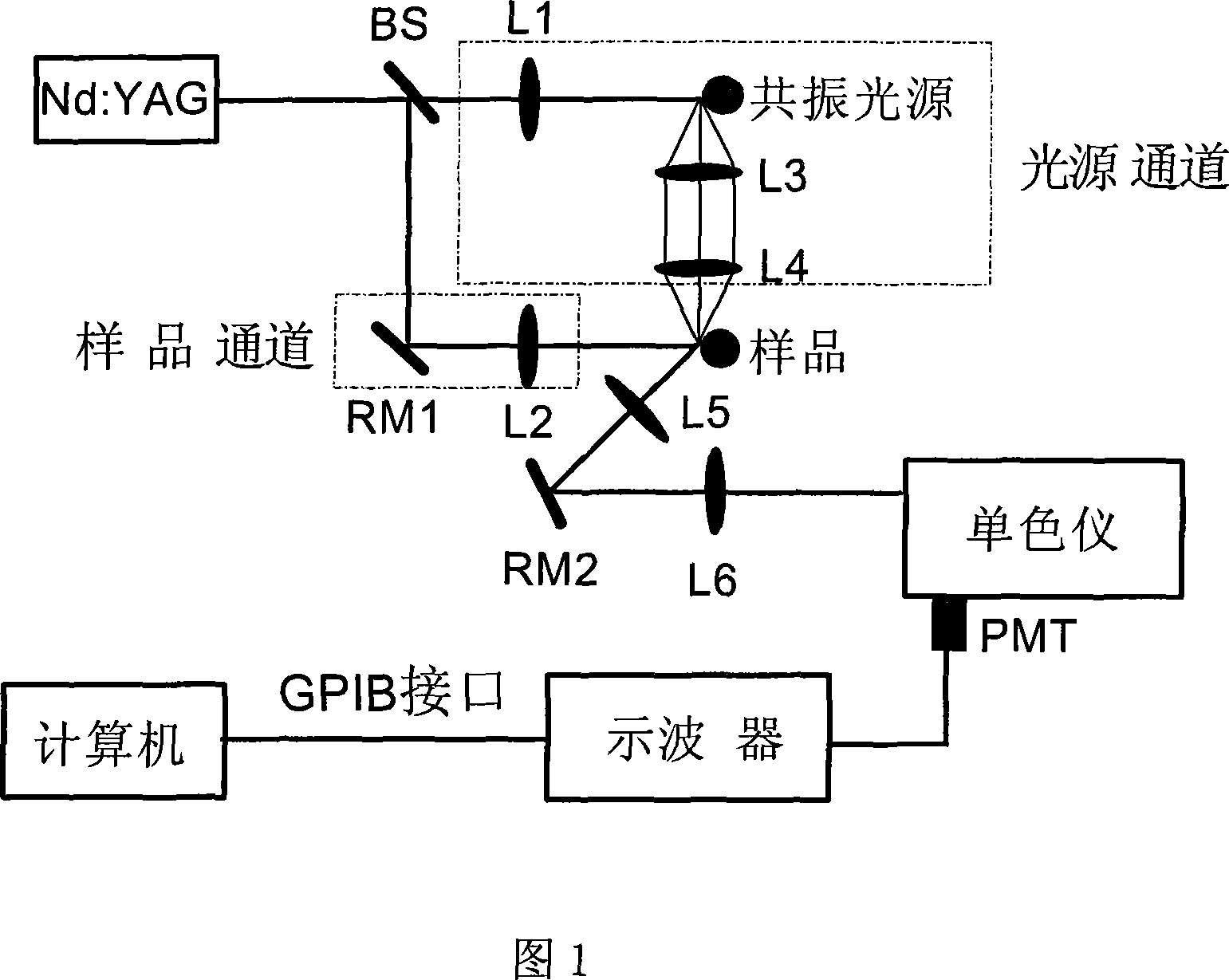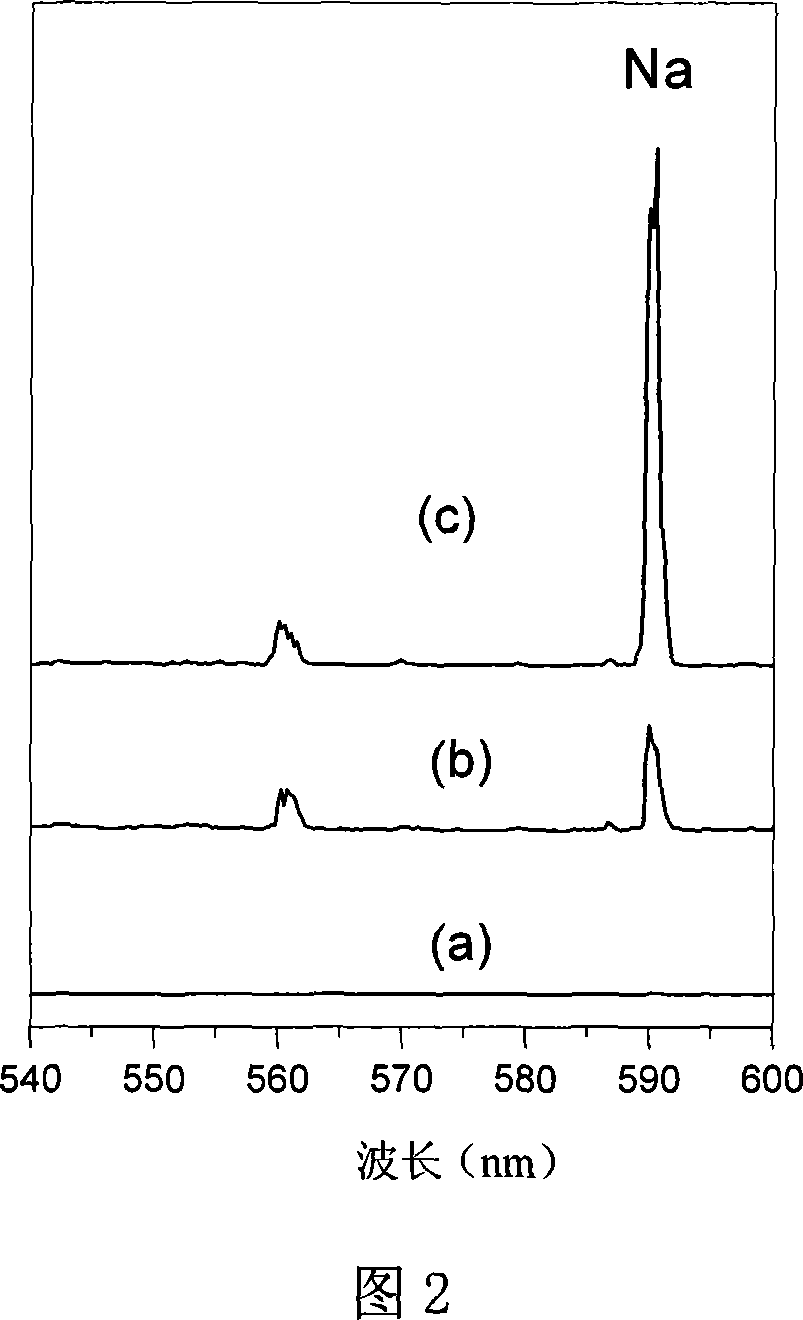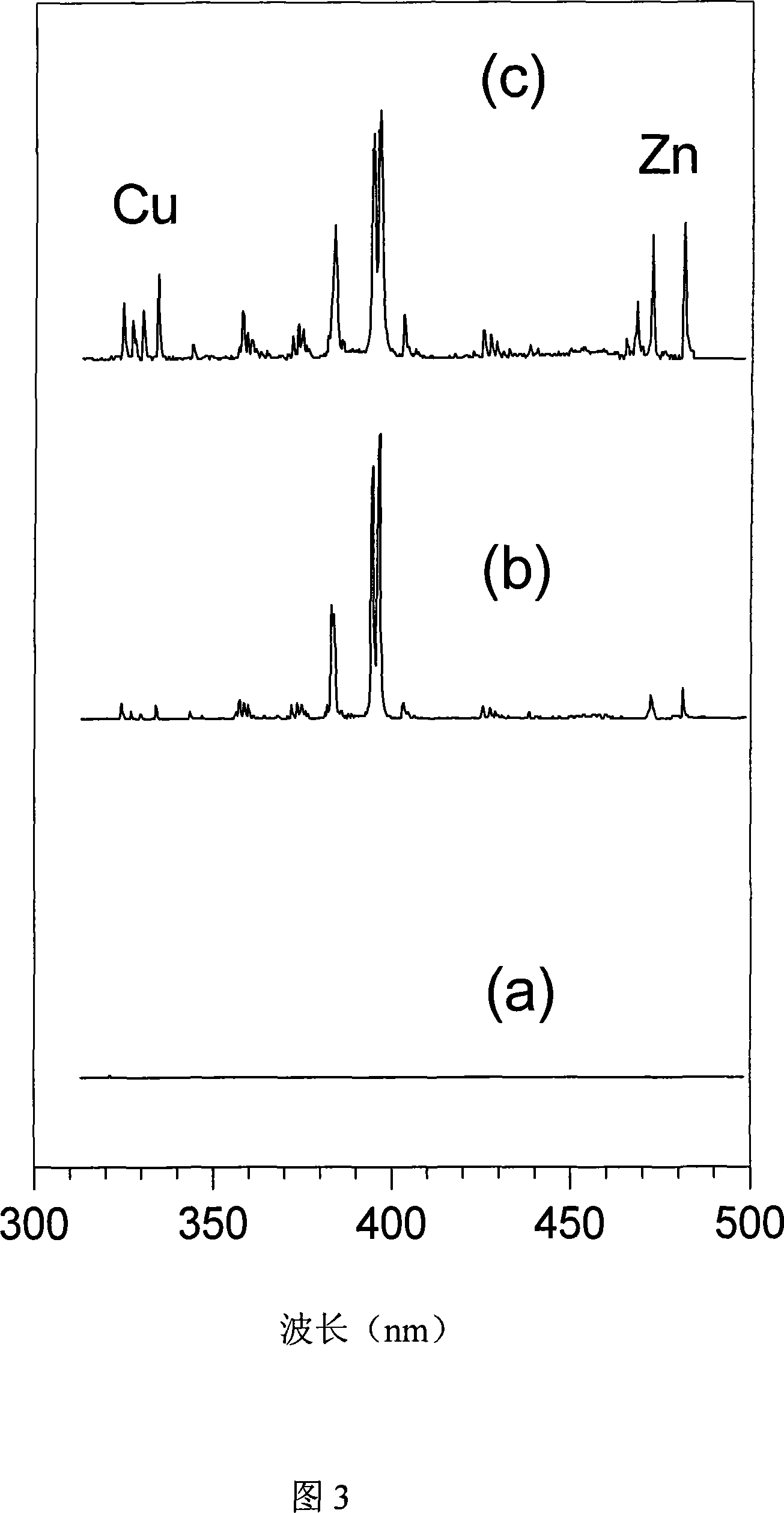Double-path resonance enhanced laser guidence breakdown spectral trace element analyser and method
A technology of laser-induced breakdown and trace elements, applied in the direction of material excitation analysis, etc., can solve the problems of expensive, low sensitivity, expensive lasers, etc., and achieve the effect of low cost and simple structure
- Summary
- Abstract
- Description
- Claims
- Application Information
AI Technical Summary
Problems solved by technology
Method used
Image
Examples
Embodiment 1
[0032] A dual-channel resonance enhanced laser-induced breakdown spectrum trace element analyzer as shown in Figure 1, in which Nd:YAG is an electro-optic Q-switched pulsed Nd:YAG laser (Beijing Times Zhuoyi, TurboLite), and its output wavelength is 1064nm, pulse width 10ns, repetition rate 5Hz, pulse energy about 200mJ; BS (beam splitter) is a beam splitter; RM1 and RM2 (reflection mirror) are mirrors; L1~L6 are lenses, and the focal length of each lens is: L1 , L2 and L3, f=10cm, L4 and L5, f=15cm, L6, f=25cm; PMT (photomultiplier tube) is a photomultiplier tube (Hamamatsu, CR114 type). The resonance light source is a laser-induced plasma light source of a single substance, compound or mixture, and the elements to be analyzed will be different depending on the element; the sample is the sample to be analyzed; the monochromator is a grating monochromator (Tianjin Tuopu, WDS-5 type ), the focal length is 50cm; the oscilloscope is a 250MHz digital storage oscilloscope (GW Inste...
Embodiment 2
[0043] Fig. 2 is a diagram of the test results of the test using the analyzer of Fig. 1 .
[0044] In order to observe the experimental effect of Na atom double-line double-channel resonance-enhanced laser-induced breakdown spectroscopy, the sample is selected as an aluminum alloy containing a small amount of Na atoms, and the resonance light source in the light source channel is a wood chip soaked in a supersaturated NaCl solution.
[0045] In the figure, the abscissa is the wavelength (in nanometers), and the ordinate is the luminous intensity.
[0046] Curve (a) in the figure: the sample channel is blocked, and only the light source channel is left, which is a straight line at this time, indicating that the strong laser-induced plasma resonance light radiation of the resonant light source will not be collected into the monochromator and cause background signals .
[0047]Curve (b) in the figure: the light source channel is blocked, only the sample channel remains, and this...
Embodiment 3
[0051] FIG. 3 is a graph showing test results of another test performed using the analyzer of FIG. 1. FIG.
[0052] In order to observe the experimental effect of dual-channel resonance enhanced laser-induced breakdown spectroscopy of Cu atoms and Zn atoms, the sample is selected as an aluminum alloy containing a small amount of Cu atoms and Zn atoms, and the resonance light source in the light source channel is a Cu-Zn binary alloy (yellow copper).
[0053] In the figure, the abscissa is the wavelength (in nanometers), and the ordinate is the luminous intensity.
[0054] Curve (a) in the figure: the sample channel is blocked, and only the light source channel is left, which is a straight line at this time, indicating that the strong laser-induced plasma resonance light radiation of the resonant light source will not be collected into the monochromator and cause background signals .
[0055] Curve (b) in the figure: the light source channel is blocked, only the sample channe...
PUM
 Login to View More
Login to View More Abstract
Description
Claims
Application Information
 Login to View More
Login to View More - R&D
- Intellectual Property
- Life Sciences
- Materials
- Tech Scout
- Unparalleled Data Quality
- Higher Quality Content
- 60% Fewer Hallucinations
Browse by: Latest US Patents, China's latest patents, Technical Efficacy Thesaurus, Application Domain, Technology Topic, Popular Technical Reports.
© 2025 PatSnap. All rights reserved.Legal|Privacy policy|Modern Slavery Act Transparency Statement|Sitemap|About US| Contact US: help@patsnap.com



